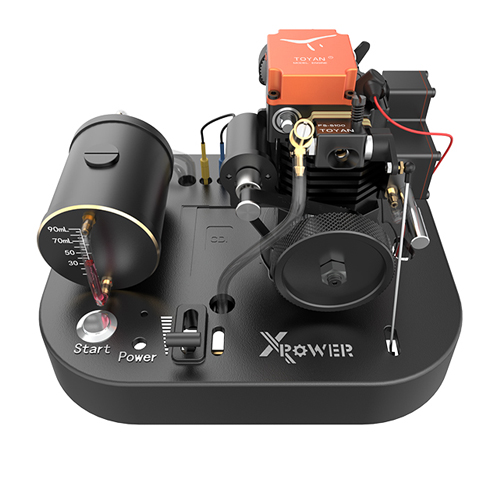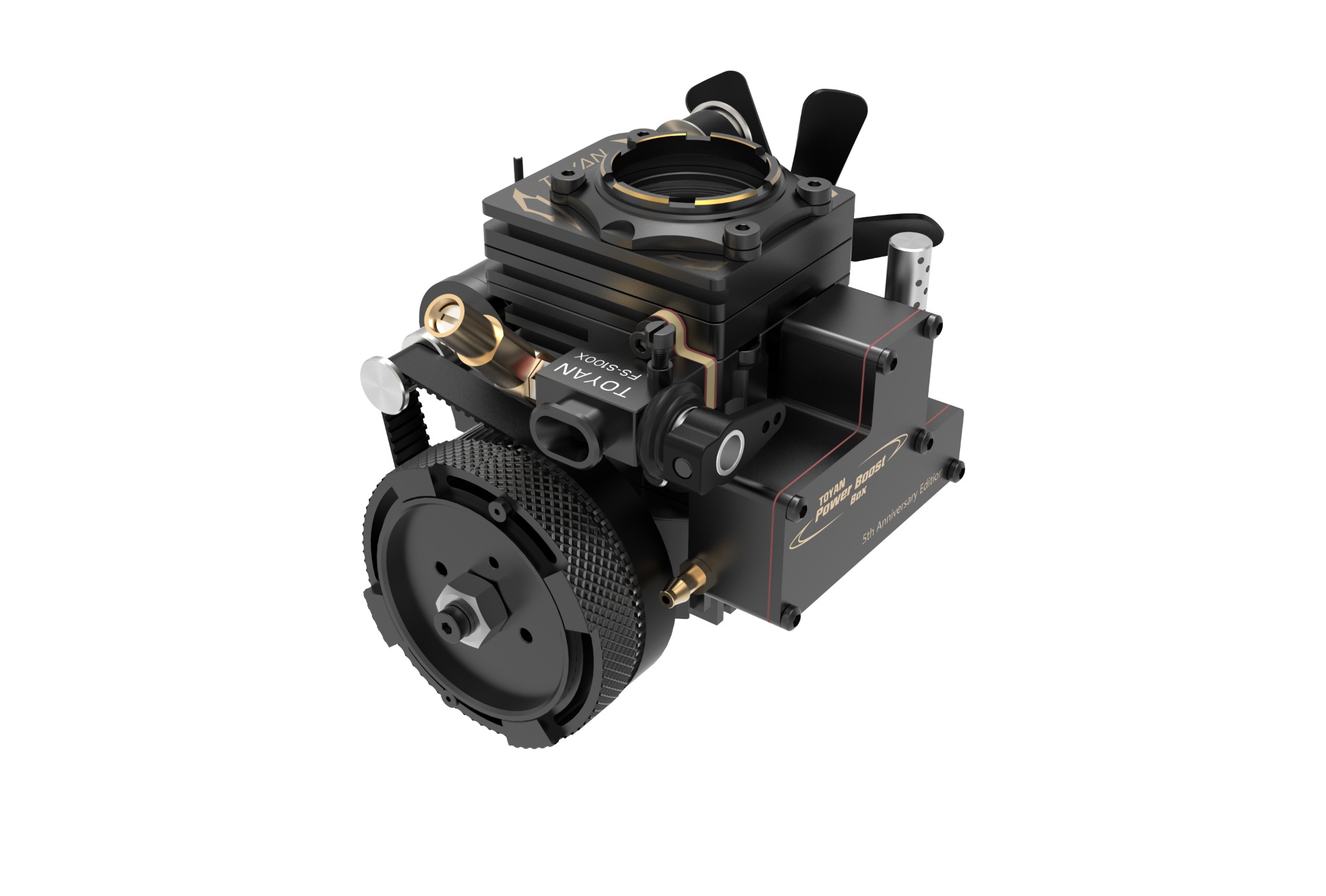Working Principle OF TOYAN 4 Stroke Engine
No Matter it is a gasoline model engine or a methanol engine, as long as it is a four-stroke engine, a working cycle is completed through four strokes of intake, compression, work, and exhaust. During this process, the piston reciprocates up and down for four strokes, and the corresponding crankshaft Rotate for two cycles.
Intake Stroke
Taking a gasoline engine as an example, the intake valve opens and the exhaust valve closes. The piston moves from top dead center to bottom dead center. The cylinder volume above the piston increases to produce vacuum. The pressure in the cylinder drops below the intake pressure and passes under the action of vacuum suction. Gasoline atomized by a carburetor or gasoline injection device.It mixes with air to form a combustible mixture and is sucked into the cylinder by the intake port and intake valve. The intake process continues until the piston passes the bottom dead center and the intake valve closes. Then the upward piston begins to compress the gas.


Intake Stroke
Taking a gasoline engine as an example, the intake valve opens and the exhaust valve closes. The piston moves from top dead center to bottom dead center. The cylinder volume above the piston increases to produce vacuum. The pressure in the cylinder drops below the intake pressure and passes under the action of vacuum suction. Gasoline atomized by a carburetor or gasoline injection device.It mixes with air to form a combustible mixture and is sucked into the cylinder by the intake port and intake valve. The intake process continues until the piston passes the bottom dead center and the intake valve closes. Then the upward piston begins to compress the gas.

Compression stroke:
When the intake and exhaust valves are all closed, the temperature of the combustible mixture in the compression cylinder rises and the pressure rises. Before the piston approaches top dead center, the pressure of the combustible mixture rises to about 0.6 to 1.2 MPa, and the temperature can reach 330°C to 430°C.
When the intake and exhaust valves are all closed, the temperature of the combustible mixture in the compression cylinder rises and the pressure rises. Before the piston approaches top dead center, the pressure of the combustible mixture rises to about 0.6 to 1.2 MPa, and the temperature can reach 330°C to 430°C.

Work stroke:
When the compression stroke is close to the top dead center, the spark plug installed above the cylinder head emits an electric spark to ignite the compressed combustible mixture. After the combustible mixture burns, it releases a lot of heat. The gas pressure and temperature in the cylinder rise rapidly, and the maximum combustion pressure can reach 3~6MPa, and the maximum combustion temperature can reach 2200℃~2500℃. The high-temperature and high-pressure gas pushes the piston to move to the bottom dead center quickly, and the intake and exhaust valves are closed when the external work stroke starts through the crank connecting rod mechanism.
When the compression stroke is close to the top dead center, the spark plug installed above the cylinder head emits an electric spark to ignite the compressed combustible mixture. After the combustible mixture burns, it releases a lot of heat. The gas pressure and temperature in the cylinder rise rapidly, and the maximum combustion pressure can reach 3~6MPa, and the maximum combustion temperature can reach 2200℃~2500℃. The high-temperature and high-pressure gas pushes the piston to move to the bottom dead center quickly, and the intake and exhaust valves are closed when the external work stroke starts through the crank connecting rod mechanism.

Exhaust stroke:
The exhaust valve opens at the end of the work stroke. Since the pressure in the cylinder is higher than the atmospheric pressure at this time, the high-temperature exhaust gas is quickly discharged from the cylinder, which is a free exhaust phase. The high-temperature exhaust gas is discharged through the exhaust valve at the local speed of sound and enters the forced exhaust phase as the exhaust process progresses. The piston moves past the bottom dead center and moves to the top dead center to force the exhaust gas in the cylinder to be discharged near the top dead center. The exhaust process ends. At the end of the exhaust, the gas pressure in the cylinder is slightly higher than the atmospheric pressure by about 0.105~0.115MPa, and the exhaust gas temperature is about 600℃~900℃. Because the combustion chamber occupies a certain volume, it is impossible to completely remove the exhaust gas at the end of the exhaust gas. The remaining part of the exhaust gas is called the residual exhaust gas.
More exciting videos:
http://i.youku.com/u/UNjc1OTM0NzY4MA==?spm=a2h0c.8166622.PhoneSokuPgc_2.dportrait
The exhaust valve opens at the end of the work stroke. Since the pressure in the cylinder is higher than the atmospheric pressure at this time, the high-temperature exhaust gas is quickly discharged from the cylinder, which is a free exhaust phase. The high-temperature exhaust gas is discharged through the exhaust valve at the local speed of sound and enters the forced exhaust phase as the exhaust process progresses. The piston moves past the bottom dead center and moves to the top dead center to force the exhaust gas in the cylinder to be discharged near the top dead center. The exhaust process ends. At the end of the exhaust, the gas pressure in the cylinder is slightly higher than the atmospheric pressure by about 0.105~0.115MPa, and the exhaust gas temperature is about 600℃~900℃. Because the combustion chamber occupies a certain volume, it is impossible to completely remove the exhaust gas at the end of the exhaust gas. The remaining part of the exhaust gas is called the residual exhaust gas.
More exciting videos:
http://i.youku.com/u/UNjc1OTM0NzY4MA==?spm=a2h0c.8166622.PhoneSokuPgc_2.dportrait

